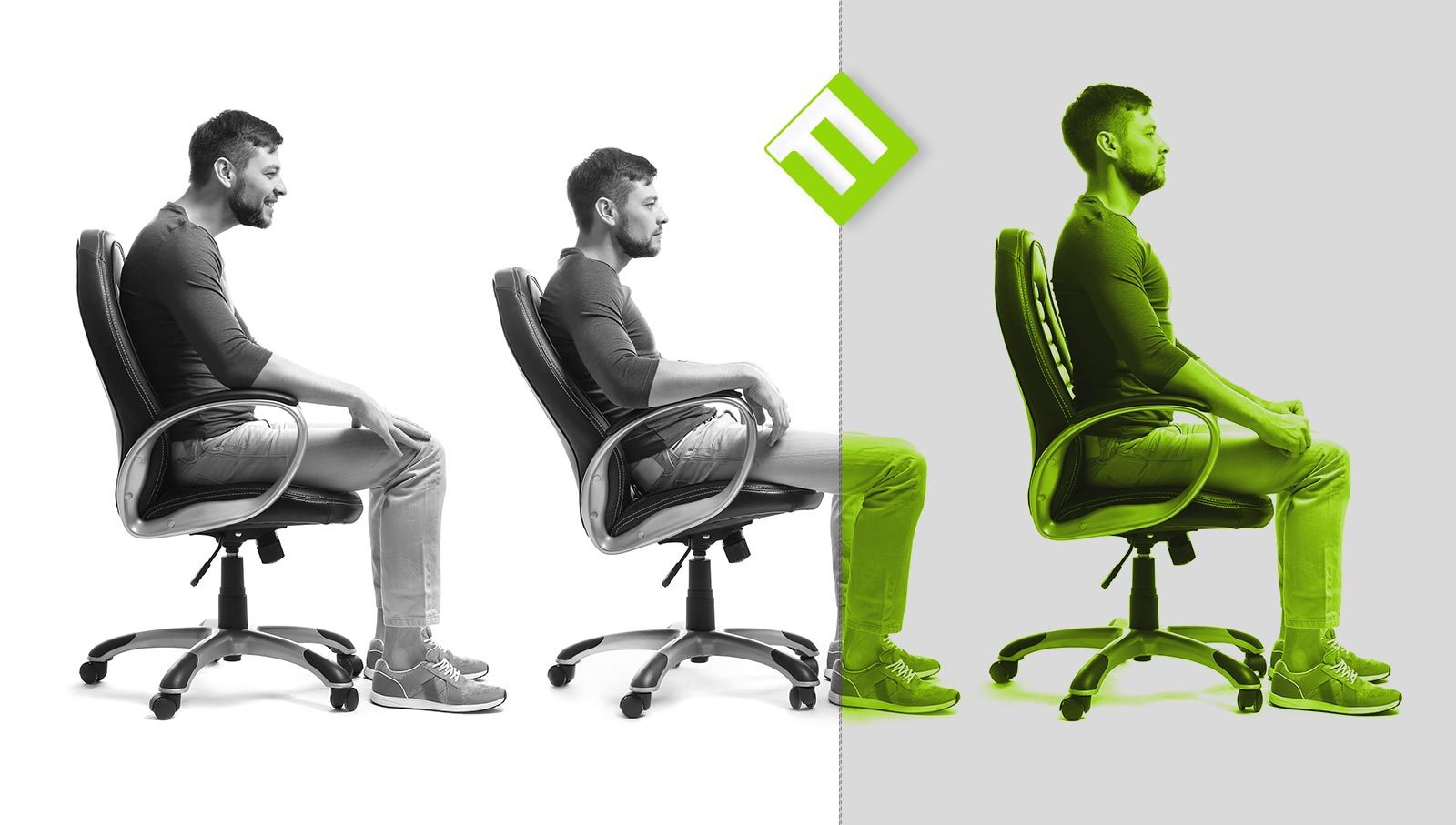When most people think of posture their minds may go back to the days of their mom’s knuckles sticking between their shoulders reminding them to quit slouching or teachers instructing them to stand up straight in line after recess. Business or sales professionals may think of having a strong and confident posture going into an interview or sale to impress potential employers or customers. With musculoskeletal disorders being a major reason for employee absenteeism, and the fact that most of these disorders are linked to muscular imbalances, companies need to start taking a closer look at their employees postures and take action to correct any deficiencies.
Forward Head Posture is the most common postural distortions. In this condition a person holds their head protracted forward away from the spine. With an upright posture, the ears are in line with the shoulders and there is minimal stress on the muscles, bones and discs of the neck. This is the position where the 10-12 lbs. an adult’s head normally weighs is balanced by gravity and is the ideal posture to maintain. When a person drops their chin forward to their chest, this balance is thrown off and a great deal of stress is placed on the cervical spine and the muscles at the base of the neck.
Let’s use our imagination and imagine that a group of people in your workplace all come in tomorrow with a new trendy style of necklace. These necklaces are very unique and are made of bowling balls. At lunch that day I bet a majority of these trendy people complain of a sore neck and tension headache. This scenario may seem ridiculous but is not far from what is going on in a majority of workplaces according to Dr. Adalbert Kapandji. In his book “The Physiology of Joints”, Dr. Kapandji demonstrates that for every inch a person’s head protrudes forward, an additional 10 lbs. of force is placed on the neck. This extra stress has substantial negative effects on the body, considering some people have up to 3 inches of Forward Head Posture.
 Effects of Forward Head Posture
Effects of Forward Head Posture
- Chronic neck pain
- Disc herniation
- Pinched nerves
- Headaches caused by muscle tension
- Neck arthritis
- Balance issues
- Vision issues due to eye strain
- Decreased lung capacity
- Digestive issues
Tips to Improve Posture
- Hold hand-held electronics up at eye level
- Position top of computer monitor at top of head
- Take regular breaks from workstation to stretch
- Perform chin tucks and shoulder squeezes throughout day. In a chin tuck pull your head back and up, lengthening your neck. In a shoulder squeeze pull your shoulders together and down. Hold each for 3 seconds and complete 10 reps.
- When walking or standing make sure to keep your thumbs facing forward and not inwards to prevent internal shoulder rotation.
On a larger scale what should a company do to combat this issue and implement more effective safety and wellness programs? To answer this one can look at the results of a study by Anderson and Kaergaard who measured new onset neck and shoulder pain in 3123 industrial and service workers in Denmark. Over their four year study, 14.1% of the participants reported new onset neck and shoulder pain. The most significant finding is that workers with jobs where the neck is flexed forward more than 20 degrees for longer than two-thirds of their day have the highest odds of having neck and shoulder pain. Other contributing factors along with steps on how they can be addressed are listed below.
Factors Associated with Employee Neck Pain
- Repetitive movement of the shoulder and arm: Make sure objects are in optimal position to prevent reaching.
- Awkward workstation posture: Optimize desk or station ergonomics for each individual’s body type.
- Low job task variety: When possible provide variety to workers so they are not repeating the same movements every day.
- Work tasks with low recovery time: Work at safe and sustainable pace.
- High level of emotional stress: Provide stress reducing wellness programs and educational opportunities.
Andersen JH, Kaergaard A, Mikkelsen S, et al
Risk factors in the onset of neck/shoulder pain in a prospective study of workers in industrial and service companies
Occupational and Environmental Medicine 2003; 60: 649-654.
Burns, Krista. “Forward Head Posture, a Corporate Nightmare.” American Posture Institute, 30 May 2016, americanpostureinstitute.com/forward-head-posture-a-corporate-nightmare-2/.

